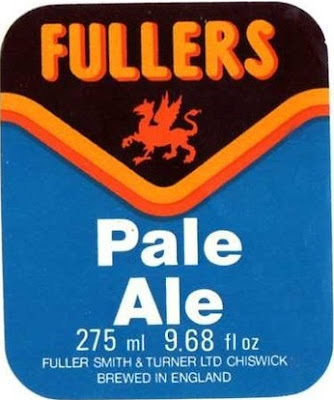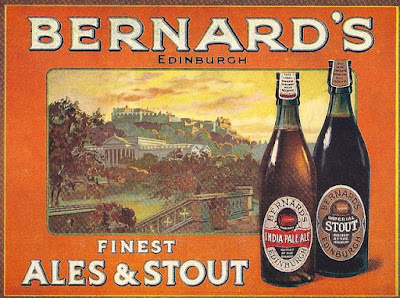Or, to be more accurate, its decline and fall.
Fullers AK started off with a classic gravity for the type or 1050º. Well, at the top end of a typical gravity. This was chipped away a little in the years 1887 to 1914, but it was still a respecatable 1045º when WW I kicked off. What would count as a respectable Best Bitter nowadays. But at the time, the weakest of Fuller's Pale Ales.
The first couple of years of the war didn't have a huge amount of impact. The OG dropped less than one point bewteen 1914 and 1916. The years after that were far more cruel. By 1918, AK's gravity wasn't much more than half of what it had been at the start of hostilities.
Things pickled up again in 1919, but still left AK only a few decimal points above 1030º. Just two-thirds of its pre-war gravity. However, the hopping rate did increase during the war. Presumably to try and compensate for the fall in gravity.
Next we'll see what happened to AK between the wars.
| Fullers AK 1887 - 1920 | |||||||
| Date | Year | OG | FG | ABV | App. Atten-uation | lbs hops/ qtr | hops lb/brl |
| 21st Apr | 1887 | 1049.6 | 1014.1 | 4.69 | 71.51% | 7.61 | 1.66 |
| 3rd Aug | 1897 | 1049.9 | 1012.5 | 4.95 | 75.00% | 9.47 | 2.85 |
| 20th Oct | 1902 | 1046.3 | 1010.5 | 4.73 | 77.25% | 8.43 | 1.68 |
| 14th Mar | 1910 | 1045.0 | 1008.9 | 4.78 | 80.31% | 6.90 | 1.43 |
| 18th Mar | 1910 | 1044.9 | 1008.3 | 4.84 | 81.48% | 7.29 | 1.43 |
| 20th Nov | 1914 | 1044.3 | 1009.1 | 4.65 | 79.38% | 7.33 | 1.34 |
| 2nd Jul | 1915 | 1044.5 | 1009.7 | 4.61 | 78.22% | 7.84 | 1.42 |
| 1st Jun | 1916 | 1043.9 | 1009.7 | 4.53 | 77.93% | 8.20 | 1.54 |
| 12th Jan | 1917 | 1041.8 | 1007.8 | 4.50 | 81.44% | 8.17 | 1.40 |
| 1st Nov | 1917 | 1035.9 | 1007.8 | 3.73 | 78.41% | 9.64 | 1.47 |
| 11th Apr | 1918 | 1026.1 | 1005.5 | 2.73 | 78.81% | 9.99 | 1.10 |
| 15th Apr | 1919 | 1026.0 | 1004.4 | 2.86 | 82.98% | 9.04 | 1.08 |
| 19th Jun | 1919 | 1028.2 | 1004.7 | 3.10 | 83.28% | 9.72 | 1.14 |
| 27th Aug | 1919 | 1030.5 | 1006.9 | 3.12 | 77.31% | 9.96 | 1.28 |
| 11th Feb | 1920 | 1030.6 | 1007.5 | 3.06 | 75.59% | 9.80 | 1.21 |
| Source: | |||||||
| Fullers brewing records held at the brewery | |||||||





















































































